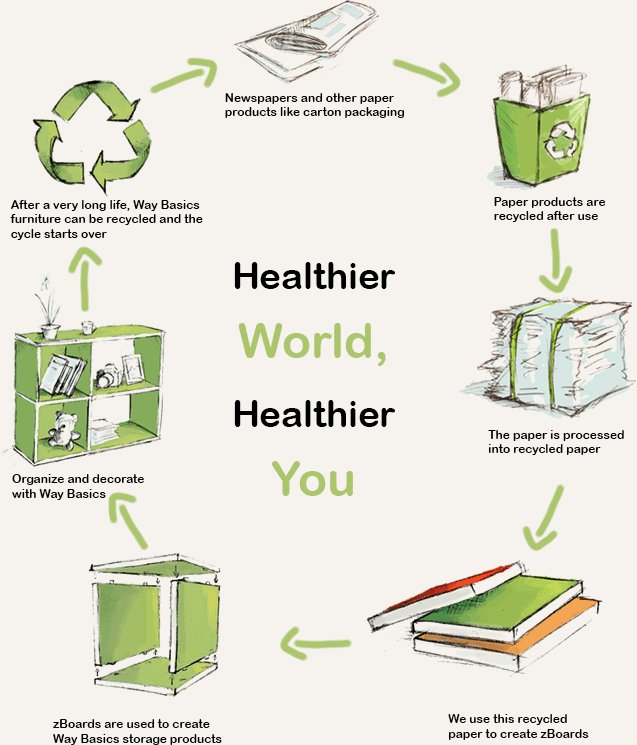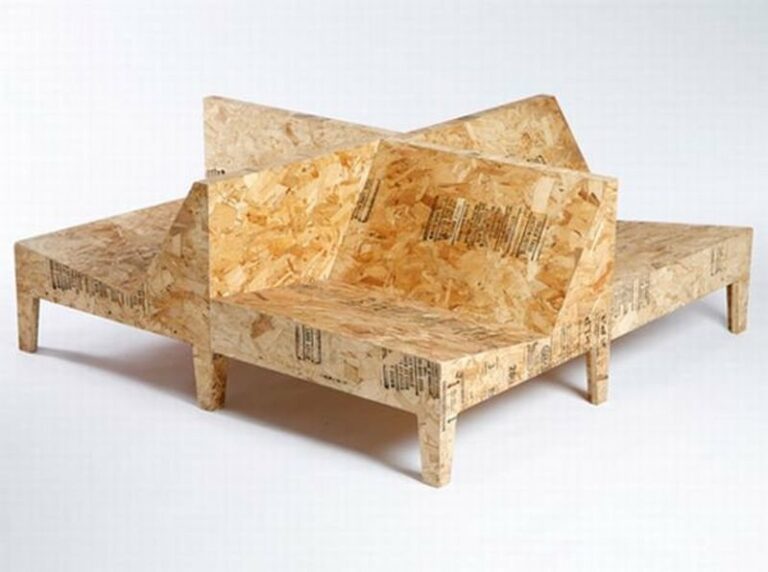Can Eco-Friendly Furniture Be Made from Non-Toxic Materials?
Can Eco-Friendly Furniture Be Made from Non-Toxic Materials? Yes, it absolutely can! In today’s world where sustainability and health-consciousness are becoming increasingly important, eco-friendly furniture made from non-toxic materials is gaining popularity.
People are embracing the idea of furnishing their homes with pieces that not only reduce their environmental footprint but also ensure a healthier living environment.
By utilizing non-toxic materials and manufacturing processes, furniture designers and manufacturers are revolutionizing the industry, creating beautiful, functional, and eco-friendly pieces that support both the well-being of individuals and the planet.
So, let’s explore how this incredible concept is changing the way we furnish our spaces, and discover the benefits of incorporating eco-friendly furniture into our homes.
Can Eco-Friendly Furniture Be Made from Non-Toxic Materials?
The Importance of Eco-Friendly Furniture
In recent years, there has been a growing awareness of the impact that our choices as consumers have on the environment. People are starting to take into consideration the sustainability and eco-friendliness of the products they purchase, including furniture. As a result, the demand for eco-friendly furniture has been on the rise. Eco-friendly furniture is designed to minimize harm to the environment throughout its lifecycle, from production to disposal. One crucial aspect of eco-friendly furniture is the use of non-toxic materials.
Understanding Non-Toxic Materials
Non-toxic materials are substances that do not contain any harmful chemicals or toxins. They are safe for human health and the environment. Traditional furniture materials often contain volatile organic compounds (VOCs), formaldehyde, flame retardants, and other chemicals that can release harmful gases into the air we breathe. Non-toxic materials, on the other hand, are free from these hazardous substances, making them safer for both humans and the environment.
Benefits of Non-Toxic Materials in Furniture
Using non-toxic materials in the production of furniture brings several advantages:
- Promotes Indoor Air Quality: Traditional furniture materials can emit toxic gases, leading to poor indoor air quality. Non-toxic materials eliminate this risk, creating healthier living environments.
- Reduced Environmental Impact: Non-toxic materials are often sourced sustainably, minimizing the negative impact on ecosystems. They also break down more easily, reducing waste and contributing to a circular economy mindset.
- Healthier Living Spaces: By choosing furniture made with non-toxic materials, you can create a safer and healthier home environment for you and your family.
- Support for Sustainable Practices: Non-toxic materials are typically associated with eco-friendly practices, such as responsible sourcing and manufacturing. By supporting furniture made from these materials, you are encouraging sustainable practices within the industry.
Finding Eco-Friendly Furniture Made from Non-Toxic Materials
As the demand for eco-friendly furniture grows, more and more manufacturers are incorporating non-toxic materials into their designs. When searching for eco-friendly furniture made from non-toxic materials, here are some key factors to consider:
Material Selection
The choice of materials used in furniture production greatly influences its eco-friendliness. Look for furniture made from the following non-toxic materials:
- Organic and Natural Fabrics: Opt for upholstery made from organic cotton, linen, or hemp, which are free from pesticides and chemicals.
- Sustainably Sourced Wood: Choose furniture made from wood certified by organizations such as the Forest Stewardship Council (FSC), ensuring it comes from responsibly managed forests.
- Recycled and Upcycled Materials: Furniture crafted from reclaimed or repurposed materials significantly reduces waste and minimizes the need for new resources.
- Low-VOC Finishes: Look for furniture finished with water-based, low-VOC (volatile organic compound) paints, stains, or sealants to minimize off-gassing.
- Non-Toxic Fillings: Check that cushions and padding are made from non-toxic, natural materials like natural latex foam, organic cotton, or wool.
Certifications and Labels
When shopping for eco-friendly furniture, look for relevant certifications and labels that signify the use of non-toxic materials:
- GREENGUARD: This certification ensures that the furniture meets strict emission limits for indoor air quality.
- Cradle to Cradle: Products with this label have undergone rigorous testing for their environmental impact throughout their entire lifecycle.
- Oeko-Tex Standard 100: This certification guarantees that textiles used in furniture are free from harmful substances.
Research and Reviews
Before making a purchase, conduct thorough research on the brand and product. Read reviews and check if the company has a commitment to sustainability and transparency in their manufacturing processes. Look for certifications, awards, or recognitions that indicate their dedication to eco-friendly practices and the use of non-toxic materials.
The Future of Eco-Friendly Furniture
The popularity of eco-friendly furniture is likely to continue to rise as more people realize the importance of sustainable living. With advancements in technology and increased awareness, manufacturers will have access to even better non-toxic materials, making eco-friendly furniture the norm rather than the exception.
By choosing eco-friendly furniture made from non-toxic materials, you are not only investing in your health and well-being but also supporting a greener and more sustainable future for generations to come. Together, we can make a difference one piece of furniture at a time.
Eco-Friendly Furniture | Create a Safe, Non-Toxic Home Environment
Frequently Asked Questions
Can eco-friendly furniture be made from non-toxic materials?
Yes, eco-friendly furniture can indeed be made from non-toxic materials. In fact, one of the primary principles of eco-friendly design is to use materials that are free from harmful chemicals and toxins. Many manufacturers now offer furniture made with certified non-toxic materials, such as organic fabrics, natural wood finishes, and water-based adhesives. These materials not only minimize the environmental impact but also promote healthier indoor air quality by reducing the release of volatile organic compounds (VOCs).
What are some examples of non-toxic materials used in eco-friendly furniture?
Some examples of non-toxic materials commonly used in eco-friendly furniture include sustainably harvested wood, bamboo, cork, natural latex foam, organic cotton, hemp, jute, and natural fibers. These materials are often certified by recognized organizations, ensuring that they meet specific environmental and health standards.
Are there any regulations or certifications for non-toxic furniture materials?
Yes, there are several regulations and certifications in place for non-toxic furniture materials. Some well-known certifications include the Global Organic Textile Standard (GOTS) for organic textiles, Forest Stewardship Council (FSC) for responsibly sourced wood, and Greenguard certification for low-emission products. These certifications provide assurance that the materials used in eco-friendly furniture meet strict criteria for environmental sustainability and health.
What are the benefits of using non-toxic materials in furniture?
Using non-toxic materials in furniture brings various benefits. Firstly, it reduces exposure to harmful chemicals for both manufacturers and consumers. Non-toxic materials also contribute to better indoor air quality by minimizing the release of VOCs. Additionally, these materials are often sustainable, renewable, and biodegradable, reducing the environmental impact of furniture production and disposal.
Can non-toxic furniture materials be recycled?
Yes, many non-toxic furniture materials can be recycled or repurposed. For example, wood can be reclaimed and used in other projects, while fabrics made from natural fibers can be composted. Recycling not only helps reduce waste but also conserves resources and reduces the need for new material extraction.
Is eco-friendly furniture more expensive than conventional furniture?
Eco-friendly furniture can sometimes be slightly more expensive than conventional furniture due to the use of sustainable, non-toxic materials and ethical manufacturing practices. However, as awareness and demand for eco-friendly products increase, prices are becoming more competitive. Additionally, the long-term benefits of eco-friendly furniture, such as better indoor air quality and reduced environmental impact, often make it a worthwhile investment for health-conscious and environmentally conscious individuals.
Final Thoughts
when considering eco-friendly furniture, it is crucial to prioritize non-toxic materials. By opting for furniture made from sustainable and environmentally friendly materials, we can significantly reduce our carbon footprint and promote a healthier living environment. The use of non-toxic materials in the production of furniture not only ensures our safety but also safeguards the well-being of the planet. By asking questions like “Can eco-friendly furniture be made from non-toxic materials?” and actively seeking out sustainable options, we can make a positive impact and contribute to a greener future.



